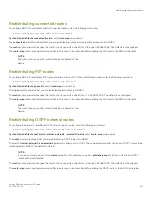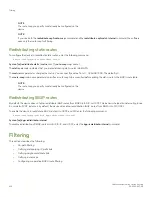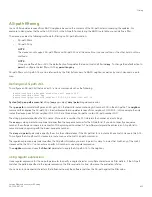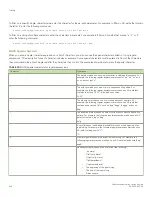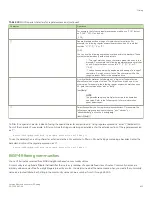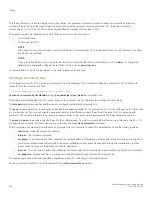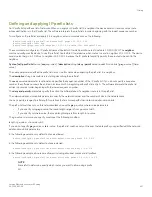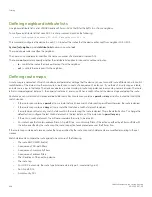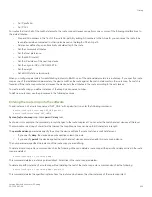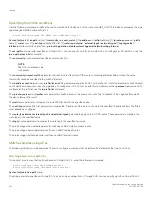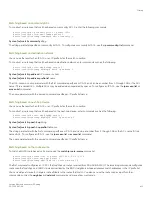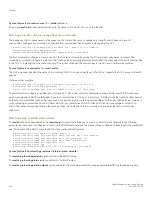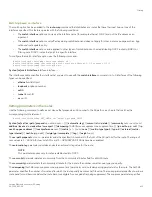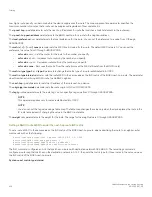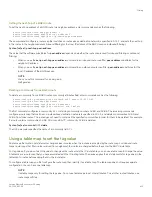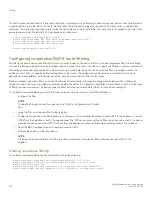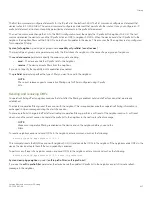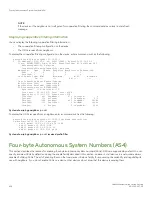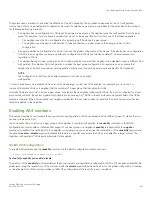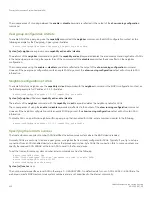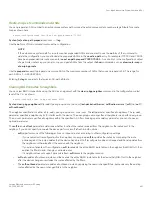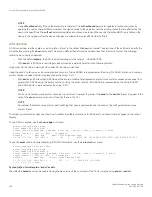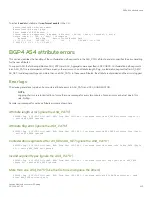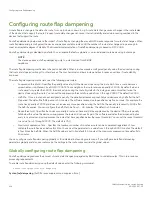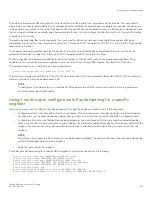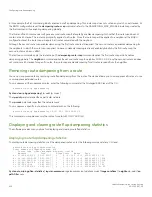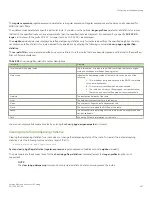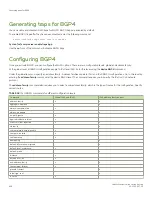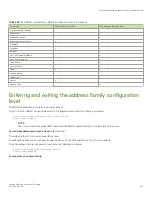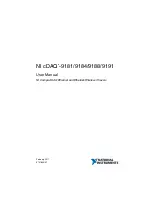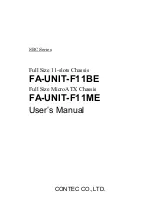
Setting the next-hop of a BGP4 route
To set the next-hop address of a BGP4 route to a neighbor address, enter commands such as the following.
device(config)# route-map bgp5 permit 1
device(config-routemap bgp5)# match ip address 1
device(config-routemap bgp5)# set ip next-hop peer-address
These commands configure a route map that matches on routes whose destination network is specified in ACL 1, and sets the next hop
in the routes to the neighbor address (inbound filtering) or the local IP address of the BGP4 session (outbound filtering).
Syntax:
[no] set ip next-hop
peer-address
The value that the software substitutes for
peer-address
depends on whether the route map is used for inbound filtering or outbound
filtering:
•
When you use the
set ip next-hop peer-address
command in an inbound route map filter,
peer-address
substitutes for the
neighbor IP address.
•
When you use the
set ip next-hop peer-address
command in an outbound route map filter,
peer-address
substitutes for the
local IP address of the BGP4 session.
NOTE
You can use this command for a peer group
configuration.
Deleting a community from a BGP4 route
To delete a community from a BGP4 route’s community attributes field, enter commands such as the following.
device(config)# ip community-list standard std_3 permit 12:99 12:86
device(config)# route-map bgp6 permit 1
device(config-routemap bgp6)# match ip address 1
device(config-routemap bgp6)# set comm-list std_3 delete
The first command configures a community ACL containing community numbers 12:99 and 12:86. The remaining commands
configure a route map that matches on routes whose destination network is specified in ACL 1, and deletes communities 12:99 and
12:86 from those routes. The route does not need to contain all the specified communities in order for them to be deleted. For example,
if a route contains communities 12:86, 33:44, and 66:77, community 12:86 is deleted.
Syntax:
[no] set comm-list
ACL
delete
The
ACL
parameter specifies the name of a community list ACL.
Using a table map to set the tag value
Route maps that contain set statements change values in routes when the routes are accepted by the route map. For inbound route
maps (route maps that filter routes received from neighbors), the routes are changed before they enter the BGP4 route table.
For tag values, if you do not want the value to change until a route enters the IP route table, you can use a table map to change the value.
A table map is a route map that you have associated with the IP routing table. The device applies the set statements for tag values in the
table map to routes before adding them to the route table.
To configure a table map, you first configure the route map, then identify it as a table map. The table map does not require separate
configuration. You can have one table map.
NOTE
Use table maps only for setting the tag value. Do not use table maps to set other attributes. To set other route attributes, use
route maps or filters.
Filtering
FastIron Ethernet Switch Layer 3 Routing
53-1003627-04
415
Summary of Contents for FastIron SX 1600
Page 2: ...FastIron Ethernet Switch Layer 3 Routing 2 53 1003627 04 ...
Page 16: ...FastIron Ethernet Switch Layer 3 Routing 16 53 1003627 04 ...
Page 20: ...FastIron Ethernet Switch Layer 3 Routing 20 53 1003627 04 ...
Page 142: ...FastIron Ethernet Switch Layer 3 Routing 142 53 1003627 04 ...
Page 150: ...FastIron Ethernet Switch Layer 3 Routing 150 53 1003627 04 ...
Page 200: ...FastIron Ethernet Switch Layer 3 Routing 200 53 1003627 04 ...
Page 214: ...FastIron Ethernet Switch Layer 3 Routing 214 53 1003627 04 ...
Page 350: ...FastIron Ethernet Switch Layer 3 Routing 350 53 1003627 04 ...
Page 476: ...FastIron Ethernet Switch Layer 3 Routing 476 53 1003627 04 ...
Page 588: ...FastIron Ethernet Switch Layer 3 Routing 588 53 1003627 04 ...

